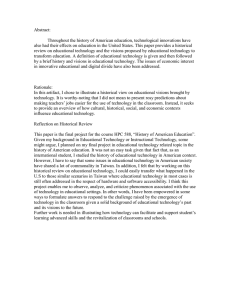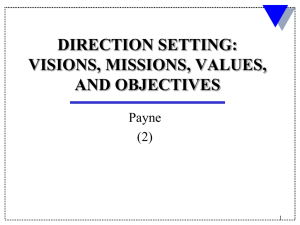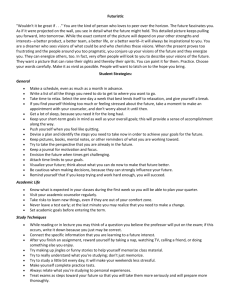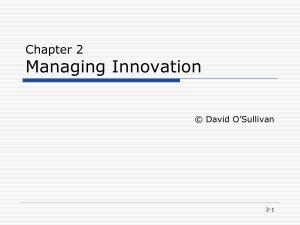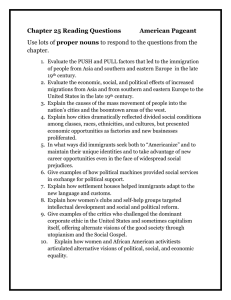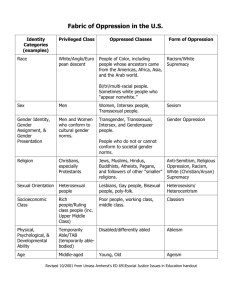Enhancing Cultural Competence in Clinical Settings (4C) Wednesday, January 13, 2016
advertisement
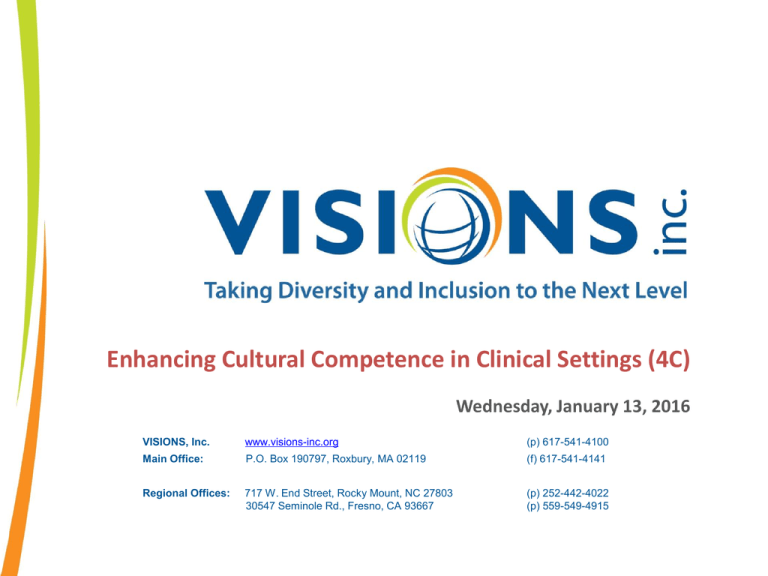
Enhancing Cultural Competence in Clinical Settings (4C) Wednesday, January 13, 2016 VISIONS, Inc. www.visions-inc.org (p) 617-541-4100 Main Office: P.O. Box 190797, Roxbury, MA 02119 (f) 617-541-4141 Regional Offices: 717 W. End Street, Rocky Mount, NC 27803 30547 Seminole Rd., Fresno, CA 93667 (p) 252-442-4022 (p) 559-549-4915 Desired Outcomes Participants will: Be able to identify themselves as cultural beings on up to 12 variables Be able to identify up to 10 ways that racism may impact their practice unintentionally Practice identifying dysfunctional cross cultural behaviors within themselves and/or among others that they work with Learn up to 10 alternative behaviors for enhancing their mental health practice Be able to link modern ism/internalized oppression theory to "Getting to the Green Zone" © VISIONS, Inc. 2011 2 Session Agenda Review of desired curriculum outcomes Define goal for today: Introducing the model and defining the importance of “self as a cultural being” (looking at 3 dimensions: cognitive, behavioral, affective) Tool 1: Guidelines for effective cross cultural dialogue Overview of a multicultural process of change at 4 interlocking levels Tool 2: Understanding self as a cultural being – Overview including application exercise Overview of what is reflective practice? Next steps and closure Guidelines For Effective Cross-Cultural Dialogue “Try on” It’s okay to disagree It is not okay to blame, shame, or attack, self or others Practice “self-focus” Practice “both/and” thinking Notice both process and content Be aware of intent and impact Confidentiality © VISIONS, Inc. 2011 4 Multicultural Process of Change (at all levels) Pluralism Monoculturalism Rejection of differences and a belief in the superiority of the dominant group at the following levels: • • • • Recognize Understand Appreciate Utilize Differences Personal Interpersonal Institutional/Systemic Cultural Monoculturalism (“Melting Pot”) Assimilation Exclusion (“Emancipatory Consciousness”) Social/Economic Justice Acceptance, appreciation, utilization and celebration of similarities and differences at these levels: • • • • Personal Interpersonal Institutional/Systemic Cultural Pluralism (“Salad Bowl/Fruit Salad”) Diversity Inclusion *Designed by: Valerie A. Batts, Ph.D.; John Capitman, Ph.D.; and Joycelyn Landrum-Brown, Ph.D. . © VISIONS, Inc. 2011 5 Levels of Oppression and Change Values Beliefs Feelings Attitudes Opinions © VISIONS, Inc. 2011 Policies Practices Rules Procedures Systems Worldview Stories Climate Shared Values Unwritten Rules Treatment Relationships Behaviors Communications Media Public Opinion Symbolic/Ritual Group Dynamics Norms 6 Focus of Change Strategies Personal: Interpersonal: Aim is to change thoughts and feelings; increase awareness & openness to learning. Aim is to enhance skills, communication patterns; impact behavior and relationships. Institutional: Cultural: Aim is to identify structural barriers and create policies, practices, programs & processes that support equitable outcomes. Aim is to create environments representative of & welcoming to the organization’s diversity; celebrate & utilize differences. © VISIONS, Inc. 2011 7 Definition of Culture Culture is the sum total ways of living, including: Values Beliefs Aesthetic Standards Linguistic Expression Patterns of Thinking Behavioral Norms Styles of Communication …which a group of people has developed to assure it’s survival in a particular environment (Pusch, 1981). We are socialized through “cultural conditioning” to adopt the ways of thinking of our own group. © VISIONS, Inc. 2011 8 HOW CULTURE IS LIKE AN ICEBERG Communicating Across Cultures Just as nine-tenths of an iceberg is below the surface of the water, most of culture is outside of conscious awareness and can be termed “deep culture.” architecture * music * dress food * visual art * drama crafts * dance * literature language * celebration Ethics: definitions of obscenity and sin, rules of decency, conception of justice, notions of modesty, ideals governing child raising, attitude toward dependency and social responsibility Aesthetics: conception of beauty, humor, patterns of visual perception Social relationships: nature of friendship, preference for competition/cooperation, physical expression, relationship with animals, patterns of superiority/inferiority, social interaction rate, courtship practices. Roles/status by sex, race, class, occupation, kinship, age, etc. Communication: expression of emotions, facial expressions, body language, conversational patterns in various social contexts, transfer of knowledge Worldview: cosmology, conception of past and future, ordering of time, notions of logic and validity, tempo of work, conception of “self”, notions of adolescence Health: tolerance of physical pain, definition of insanity, theory of disease Necessities: concepts of food, incentives to work, forms of shelter Authority: patterns of group decision making, approaches to problem-solving, who/what conveys power ..and much, much MORE! Multiple Identities The primary basis for inclusion and exclusion. Universal Human nature: “Like all other people” Group “Like some other people” Smile Think Individual Religion “Like no other person” Culture Personality, style, looks, etc. Talk © VISIONS, Inc. 2011 Ethnicity Gender Feel J.P. Sonn, 2009 Inherited and learned (caught and taught). • Privilege • “Unearned” privileges • Oppression, as flip side • All “isms” • Power: systems and structures that keep above in place • Liberatory approach – making justice, freedom, equality, fairness realities 10 A Working Conceptualization of Historically Excluded (Target) and Historically Included (Non-Target) Groups Types of Oppression Variable Historically Included Groups Historically Excluded Groups Racism Race/Color/Ethnicity White People of Color (African, Asian, Native, Latino/a Americans) Sexism Gender Men Women/Transgender Classism Socio-Economic Class Middle, Upper Class Poor, Working Class Education Level Formally Educated Informally Educated Place in Hierarchy Managers, Exempt, Faculty Clerical, Non-Exempt, Students Christians, Protestants Muslims/Catholics, and Others Jew Elitism Religious Oppression Religion Anti-Semitism Militarism Christians Military Status Ageism WW I&II, Korean, Gulf War Veterans Vietnam Veterans Young Adults Elders Adults Children/Youth Age Adultism Heterosexism Sexual Orientation Heterosexuals Gay, Lesbian, Bisexual Ableism Physical or Mental Ability Temporarily Able-Bodied Physically or Mentally Challenged Xenophobia Immigrant Status US Born Immigrant Linquistic Oppression Language English English as a Second Language Non-English © VISIONS, Inc. 2011 11 Target / Non-Target Groups- Family Ism/Type of Oppression Variable Non-Target Group Target Group Target / Non-Target Groups - Provider Ism/Type of Oppression Variable Non-Target Group Target Group Three Dimensions of Change Individual and Organizational What: Concept Why: Linkage How: Strategies Cognitive Affective Process Emotions Environment © VISIONS, Inc. 2011 Behavioral Expectations Actions Results 14 Linking Three Dimensions of Change & Getting to Green Feeling-------heart Thinking------head Behavior------hand © VISIONS, Inc. 2011 15 What is Reflective Practice? “reflective practice …encourages staff members to…slow down, filter their thoughts, and more wisely choose actions and words; deepen their under-standing of the contextual forces that affect their work…” (Heffron, M.C. and Murch, T. “Reflective Supervision and Leadership in Infant and Early Childhood Programs”, 2010) One of the Roles of Reflective Practice • Create a safe space for conversations about bias, racism and other isms… One of the Roles of the RP Supervisor – Facilitate these difficult conversations! 17 Reflective Practice Supervisor • “A (RP) supervisor must find the skill and sometimes the courage to bring up the differential treatment of clients or colleagues based on race, gender or sexual preference; unintended slights; or unexamined negative assumptions about another person’s background. Self-awareness and a stance of respect and inclusion will assist the reflective supervisor to work with staff members from many different backgrounds and perspectives.” (Heffron, M.C. and Murch, T. “Reflective Supervision and Leadership in Infant and Early Childhood Programs”, 2010) 18 Diversity-Informed IMH Tenets Self Awareness Leads to Better Services for Families: Professionals in the field of infant mental health must reflect on their own culture, personal values, and beliefs, and on the impact racism, classism, sexism, able-ism, homophobia, xenophobia, and other systems of oppressions had had on their lives in order to provide diversity-informed, culturally attuned services… (Ghosh Ippen, Norona, and Thomas, “From Tenet to Practice”, Zero to Three, November 2012.) 19 Other Diversity-Informed IMH Tenets (continued) Champion Children’s Rights Globally Work to Acknowledge Privilege and Combat Discrimination Recognize and Respect Non-dominant Bodies of Knowledge Honor Diverse Family Structures 20 Other Diversity-Informed IMH Tenets (continued) Understand That Language Can Be Used to Hurt or Heal Support Families in Their Preferred Language Allocate Resources to Systems Change Make Space and Open Pathways for Diverse Professionals Advance Policy that Supports All Families 21
